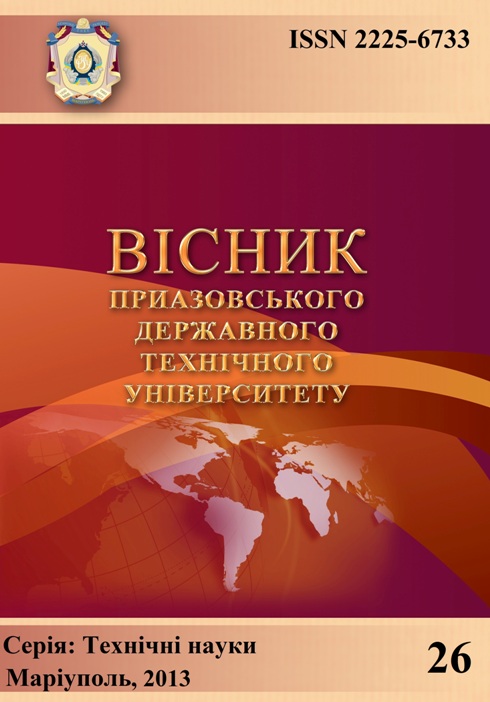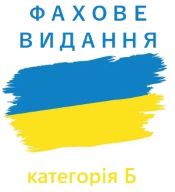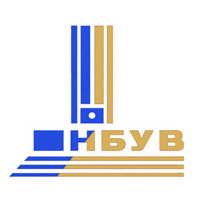Підвищення ефективності процесу електродугового наплавлення керуванням гідродинаміки зварювальної ванни
DOI:
https://doi.org/10.31498/2225-6733.26.2013.30136Ключові слова:
зварювальна ванна, гідродинамічні процеси, формоутворення, зона проплавлення, швидкість потоку, математична модельАнотація
Здійснено огляд стану справ в області моделювання зон проплавлення і наплавлення металу шва, досліджень способів управління і стабілізації процесу формоутворення зварювальної ванни і виникаючих при цьому дефектів формування. Розроблено динамічні моделі формування зварювальної ванни і пов'язаних з цим дефектів наплавленого шва. На основі цих моделей проаналізован взаємозв'язок таких інформаційних сигналів, як швидкість подачі електрода і швидкість переміщення струменя–джерела як параметрів системи управління технологічним процесом наплавлення
Посилання
Лесков Г.И. К вопросу построения динамической модели сварочной ванны при электродуговой сварке / Г.И. Лесков, С.В. Пустовойт // Автоматическая сварка. – 2011. – № 5. – C. 48-51.
Evolution of titanium arc weldment macro and microstructures-modelling and real time mapping of phases / Z. Yang, J.W. Elmer, J. Wong, T. Debroy // Welding Journal. – 2000. – vol. 79, № 4. – P. 97-112.
Размышляев А.Д. Расчетная оценка влияния конвекции жидкого металла на размеры сварочной ванны при дуговой наплавке / А.Д. Размышляев, В.Р. Маевский // Автоматическая сварка. – 2001. – №1. – С.11-15.
Zang W. Modelling of solidified free surface profile during gma welding / W. Zhang, T. Debroy // Математическое моделирование и информационные технологии в сварке и родственных процессах. (Под ред. проф. В.И. Махненко) Сб. трудов межд.конф., 16-20 сент. 2002 г., пос. Кацивели, Крым, Украина- ИЭС им. Е.О. Патона НАН Украины, Киев 2002г. С. 135-141.
Roy G.G. Motion of liquid Metal in a GTA Weld Pool with Free Surface / G.G. Roy T. DebRoy // http: //www.ems.psu.edu/modeling/ – The Pennsylvania State University. – 2002.
Redding C.G. Fume model for gas metal arc welding / C.G. Redding // Welding Journal. – 2002. – vol. 81, № 3. – P. 95-103.
Ерыгин В.И. Особенности движения жидкого расплава в сварочной ванне при наплавке с металлической крупкой / В.И. Ерыгин // Сварочное производство. – 1980. – №6. – С. 6–8.
Кузьменко В.Г. О характерных зонах сварочной ванны при дуговой сварке под флюсом / Кузьменко В.Г., Галинич В.И., Токарев В.С. // Автоматическая сварка. – 1997. – № 5. – С. 24-27.
Акулов А.И. Особенности течения жидкого металла в сварочной ванне при сварке под флюсом / А.И. Акулов, Ю.В. Доронин, В.А. Осинцев // Сварочное производство. – 1986. – № 10. – С. 10-15.
Болдырев А.М. К расчету гидродинамических параметров жидкого металла на дне сварочной ванны при дуговой сварке / А.М. Болдырев, В.А. Биржев, А.В. Черных// Сварочное производство. – 1992. – №2. – С. 31-33.
Matsunawa A. Convection in weld pool and its effect on penetration shape in stationary arc welds / A. Matsunawa, S. Yokoya, Y. Asako // Transactions of JWRI. – 1987. – vol. 16, № 2. – P. 229-236.
Лесной А.Б. Моделирование гидродинамики и массообмена при электронно-лучевом переплаве титановых сплавов / А.Б. Лесной, В.Ф. Демченко // Проблемы специальной электрометаллургии. – 2003. –№ 3. – С. 19-23.
Kou S. Computer simulation of convection in moving arc weld pools / S. Kou, Y.H. Wang // Metallurgical and Materials Transactions. – 1986. – Vol. 17A, № 12. – P. 2271-2277.
Lu S. Marangoni convection and welding penetration in A-TIG welding / S. Lu, F. Hidetoshi, H. Sugiyama, K. Nogi // Transactions of JWRI. – 2003. – vol. 32, № 2. – P. 79-82.
Lei Y. Numerical analysis of the effect of sulfur content upon fluid flow and weld pool geometry for type 304 stainless steel / Y. Lei, Y. Shi, H. Murakawa, Y. Ueda // Transactions of JWRI. – 1997. – vol. 26, № 1. – P. 1-8.
##submission.downloads##
Як цитувати
Номер
Розділ
Ліцензія
Журнал "Вісник Приазовського державного технічного університету. Серія: Технічні науки" видається під ліцензією СС-BY (Ліцензія «Із зазначенням авторства»).
Дана ліцензія дозволяє поширювати, редагувати, поправляти і брати твір за основу для похідних навіть на комерційній основі із зазначенням авторства. Це найзручніша з усіх пропонованих ліцензій. Рекомендується для максимального поширення і використання неліцензійних матеріалів.
Автори, які публікуються в цьому журналі, погоджуються з наступними умовами:
1. Автори залишають за собою право на авторство своєї роботи та передають журналу право першої публікації цієї роботи на умовах ліцензії Creative Commons Attribution License, яка дозволяє іншим особам вільно розповсюджувати опубліковану роботу з обов'язковим посиланням на авторів оригінальної роботи та першу публікацію роботи в цьому журналі.
2. Автори мають право укладати самостійні додаткові угоди, які стосуються неексклюзивного поширення роботи в тому вигляді, в якому вона була опублікована цим журналом (наприклад, розміщувати роботу в електронному сховищі установи або публікувати у складі монографії), за умови збереження посилання на першу публікацію роботи в цьому журналі.









